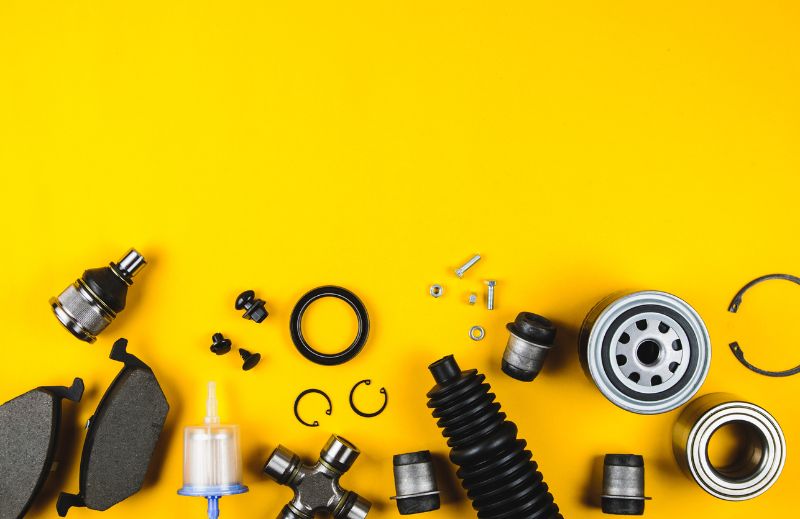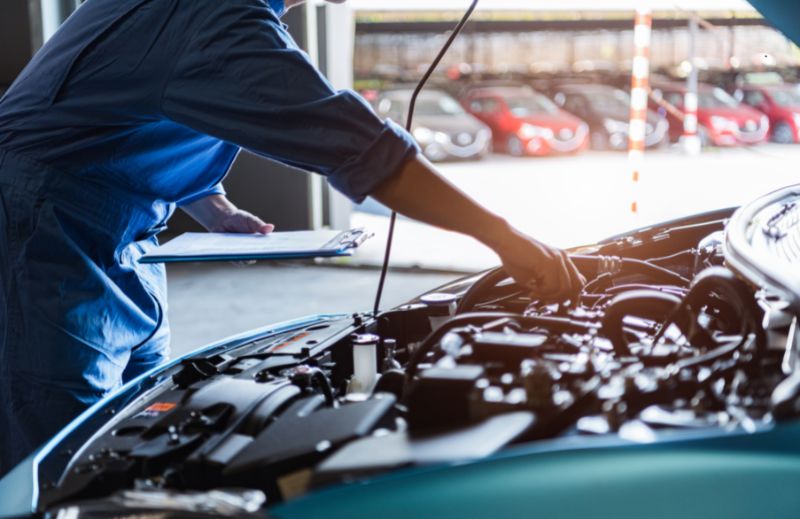When it comes to repairing or upgrading your vehicle, one of the biggest decisions you need to make is whether to opt for OEM or aftermarket parts.
OE vs OEM parts is an important comparison to understand, as each option has its own advantages and disadvantages.
OEM parts are generally higher quality, come with a warranty, and are compatible with your specific make and model of vehicle, while aftermarket parts offer greater customization, and may be a more cost-effective option.
THIS POST MAY CONTAIN AFFILIATE LINKS. PLEASE READ MY DISCLOSURE FOR MORE INFO. Which means if you click on any of the links, I’ll receive a small commission at no additional cost to you.
To help you make the right decision, this article provides an overview of OE vs OEM parts, as well as practical tips for each when making a purchase.
What is OE?
OE parts stand for original equipment. These are the parts that were originally used by the car manufacturer during the assembly of the vehicle at the factory.
Everything else that you might add or replace after the car leaves the factory, like a radiator, brake pads, or new stereo, are not OE parts.
Sometimes, when looking at car parts, you may notice the phrase “genuine OE”. This means that the part is the same exact part that was put into the car when it was made at the factory. It is not a copy or an imitation, but a real, original part.
What is OEM?
OEM stands for Original Equipment Manufacturer, which means that while these parts may not have been the original ones installed in the vehicle at the factory, they are still made by the manufacturer.
Many people mistakenly believe that OEM parts are fake, however, this is not the case.
For example, a car manufacturer may design a special spoiler or a performance package for a specific model and release it as OEM parts.
These parts are designed and manufactured to the same standards and specifications as the original parts and are a great option if you’re looking for replacement parts or upgrades for your vehicle.
OE vs OEM: What is the Difference Between OEM and Genuine Parts?
When it comes to parts for your car, there are two different types you can choose from genuine parts and OEM parts.
Genuine parts are the original parts used in the assembly of the car at the factory.
OEM parts are parts made by the manufacturer that aren’t necessarily the same as the original parts, but they still meet the same standards and specifications.
So, either genuine or OEM parts are reliable and can be used to keep your car running smoothly.
Is OE Better than OEM?
OE (original equipment) and OEM (original equipment manufacturer) are similar in that they both refer to parts the original manufacturer makes of a vehicle.
OE parts are the same parts originally installed in the vehicle at the factory and are considered to be of the highest quality.
Are Aftermarket Parts as Good as Original?
Aftermarket parts are parts that are produced by companies other than the original equipment manufacturer (OEM). These parts are not made by the same company that made the car and are not the original parts that came with the car.
While aftermarket parts can be of high quality and can be a great option if you’re looking to replace parts, save money or upgrade, they may not be as good as original parts in general.
Pros and Cons of Using Aftermarket Parts
Pros of Using Aftermarket Parts
- Cost: Aftermarket parts are often less expensive than original equipment (OE) or original equipment manufacturer (OEM) parts, making them a more cost-effective option for those looking to repair or upgrade their vehicle.
- Availability: Aftermarket parts are widely available, and can often be found at a variety of retailers and online marketplaces. This makes them easy to find and purchase.
- Variety: Aftermarket parts come in a wide variety of styles and options, which allows for greater customization of your vehicle.
- Innovation: Aftermarket parts manufacturers are always looking for ways to improve their products, and often release new and innovative parts that are not available from the original manufacturer.
Cons of Using Aftermarket Parts:
- Quality: Quality can vary greatly among aftermarket parts. They may not be manufactured to the same standards as the original parts, and may not perform well, fit well, or last as long.
- Warranty: Aftermarket parts may not come with the same warranty as original parts, and may not be covered by the vehicle’s manufacturer warranty.
- Compatibility: Aftermarket parts may not be compatible with your specific make and model of vehicle, and may not function properly.
- Safety: Aftermarket parts may not have been tested as thoroughly as original parts, and may not meet the same safety standards. This could pose a potential safety hazard.
- Legal: In some countries, using aftermarket parts can void the car’s warranty, and may not be legal for certain types of vehicles or for use on certain roads.
5 Tips When Buying OEM Parts
1. Verify the Part Number
Research and make sure the part number on the OEM part matches the one for your specific make and model of vehicle.
2. Consider the cost of labor
If the part is difficult to install, consider the cost of labor when comparing prices for OEM parts. It may be more cost-effective to have a professional install the part for you.
3. Purchase from Reputable Dealers
Buy OEM parts from reputable dealers or manufacturers to ensure that you are getting genuine parts.
4. Check for Warranty
Some OEM parts come with a warranty, so be sure to check for one before making your purchase.
5. Compare Prices
Compare prices from different dealers and manufacturers to ensure you are getting the best deal on the OEM parts you need.
5 Tips When Buying Aftermarket Parts
1. Research the Brand
Do some research on the brand of aftermarket parts you are considering purchasing. Look for customer reviews, ratings, and reputation.
2. Check for Compatibility
Make sure the aftermarket parts you purchase are compatible with your specific make and model of vehicle.
3. Check for Certifications
Look for certifications such as those from the National Automotive Parts Association (NAPA) or the International Automotive Technicians’ Network (iATN) to ensure the quality of the aftermarket parts.
4. Compare Prices
Compare prices from different sellers and brands to ensure you are getting the best deal on the aftermarket parts you need.
5. Read the Fine Print
Be sure to read the fine print and understand the terms of any warranty or return policy before making your purchase.
Wrap Up
OE vs OEM parts: What’s the difference and which one should you choose?
They are both available options for you to repair or upgrade your vehicle. OEM parts are generally higher quality, come with a warranty, and are compatible with your specific make and model of vehicle.
Aftermarket parts are widely available, offer greater customization, and maybe a more cost-effective option. However, they may not be of the same quality as OEM parts, and may not be covered by the same warranty.
Ultimately, it is important to do your research and compare prices before making a decision on which option is best for your vehicle and budget.
Disclaimer Statement: All data and information provided on this site is for informational purposes only. The Handy Tax Guy makes no absolute representation of the correctness, mistakes, omissions, delays, appropriateness, or legitimacy of any information on this site. **Note: Each client circumstance will vary on a case-by-case basis**





